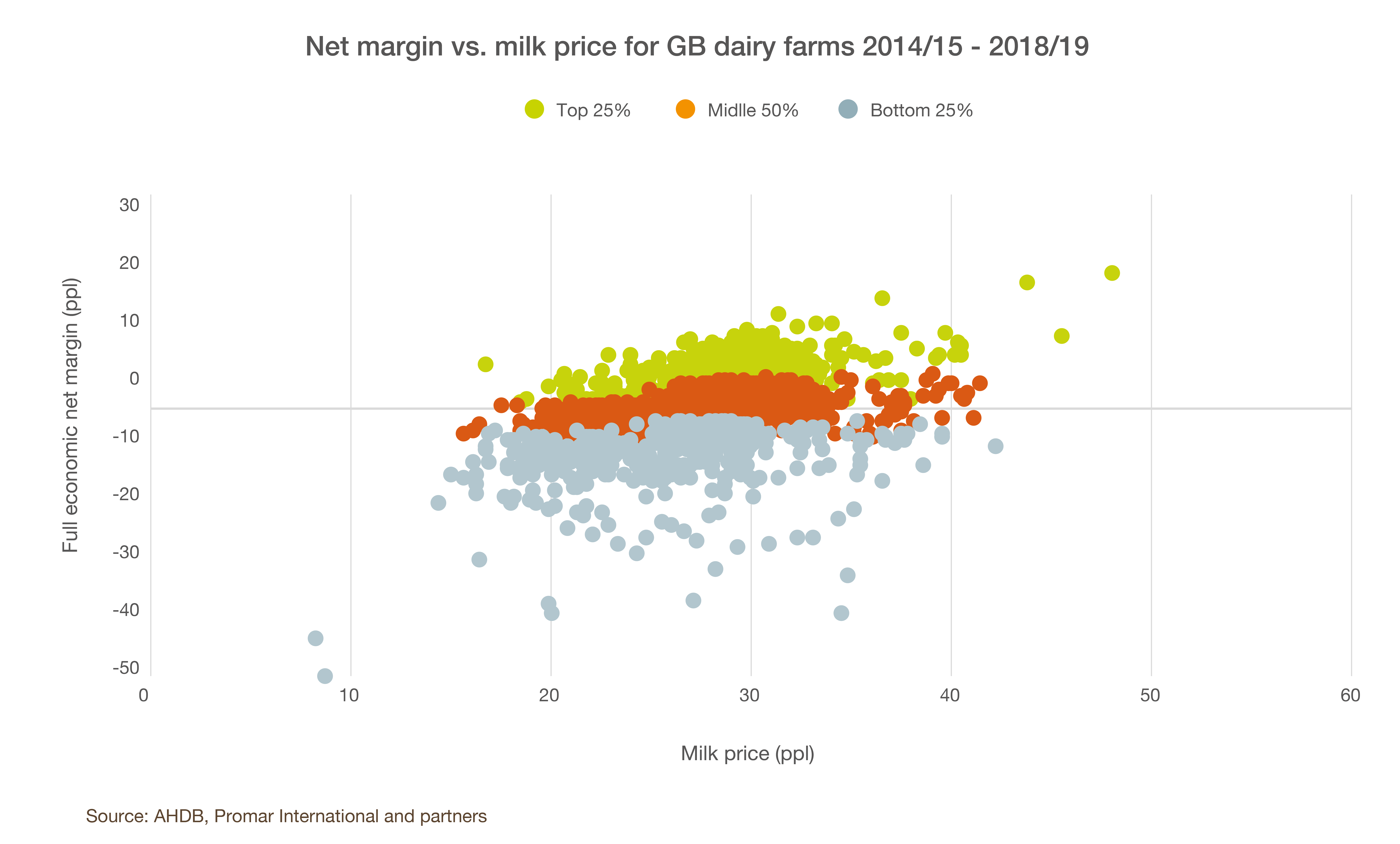Trimming costs on your dairy farm
Use this information when reviewing and monitoring costs on your dairy farm to help gain better control over your net margins.
Review your costs
When reviewing costs, ask yourself the following questions:
1. What were my production costs for the last three years?
It’s best to be aware of both cash costs and full economic costs:
- Cash costs – money you pay out for things, such as purchased feed, paid labour and rent
- Full economic costs – these include all cash costs, plus machinery and buildings depreciation, unpaid labour, and the value of owned land
For long-term budgeting, it’s essential to work with full economic costs. You can use our benchmarking calculator to work out your full economic cost of production – fill in the ‘expenses’ section. You might also find our profit and loss template useful for working out some of the more complex costs, if you don’t already have them to hand.
2. How much annual profit do I need my dairy business to make?
Work from the bottom up, to establish what the business needs to deliver. Use our profit target worksheet to work out how much profit you need and divide this number by the number of litres you sell.
3. What is my income compared with my costs plus my required profit?
If there is a shortfall, establish whether it is a temporary issue or a longer-term problem, and whether your cash costs are being covered.
4. What are my costs compared with those of other British dairy farms operating the same calving system?
Compare your costs with those of our full economic cost of production KPIs (key performance indicators).
5. Is there room for improvement in any particular area(s)?
Use our dairy performance results to compare the breakdown of your own costs with the top 25% and middle 50% of British dairy farms for the calving system you operate. Focus on the big cost areas first, then aim to shave some off the rest.
Reduce your costs
How you go about reducing costs will be specific to you and the areas you identify as priorities when reviewing your finances. We have some resources that can help.
- Our webinar Managing through current milk challenges features ideas that could help your farm business during the coronavirus outbreak.
- Our webinar Strategic ways of reducing costs and outputs focuses on creating a plan to optimise your production and maintain margin.
-
The most profitable dairy farms tend to have lower overheads – consider where you could trim overhead costs, such as for power and machinery, using the Autumn block-calving KPI in focus: overheads (excluding rent and finance) section of our Dairy performance results (page 19). Although this discusses autumn-block calving herds, the principles apply to any system
-
Grass is the cheapest feed for producing milk – use our Forage for Knowledge resources to make the most of it
-
Consider whether or not the way you buy-in feed is the still most effective for your farm
-
The most profitable farms have lower machinery costs. Use our machinery cost calculator to examine whether or not you are spending too much on your machinery
-
Find out about the eight characteristics of the top performing farms, across all sectors
Monitor your costs
The market situation is rapidly changing, so monitoring your costs in relation to your milk price is time well spent. Our input price webpages can help you keep an eye on trends.
You can also see how changes in the market have affected estimated milk production costs on GB farms. (Please note that, although regularly updated, there is a time lag in the latest data available).
How much difference do costs make to net margin?
Farms in the top 25% for financial performance consistently have lower costs than those in the bottom 25%. However, the top-performing farms do not always have the highest milk prices.
Reviewing, reducing and monitoring your cost of production can help to increase your control over your net margin.
In Figure 1, data collected between 2014/15 and 2018/19 from over 300 GB dairy farms shows larger profit margins are associated with lower production costs. The association between profit margins and milk prices is shown in Figure 2.
Figure 1

Figure 2


